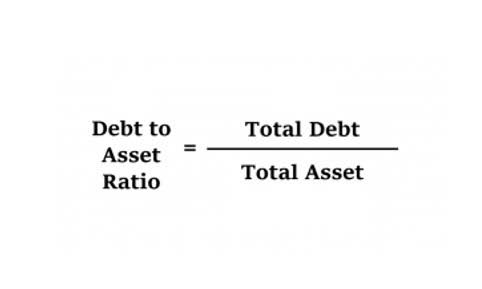
Business owners need to be mindful of these limits to maximize the deduction to its fullest potential. Input the QBI for the trade normal balance or business as properly allocable to qualified payments received from the cooperative. Qualified payments include patronage dividends and per-unit retains allocations.
QBI Deduction Phase Out 2023, 2024, 2025
Then add their sum to anything you need to carryforward from the prior year, and multiply the total by 0.2 to give you the number you’ll list as 20%. Form 8995 is the IRS tax form that owners of pass-through entities—sole proprietorships, partnerships, LLCs, or S corporations—use to take the qualified business income (QBI) deduction, also known as the pass-through or Section 199A deduction. Breaking down these components reveals how each interacts with your income streams differently. The QBI component looks closely at wages and property to limit deductions above income thresholds, especially for non-SSTBs.

Part II—Determine Your Adjusted QBI

Qualified property means depreciable tangible property (including real estate) that’s owned by a qualified business and used by that business for the production of QBI. The UBIA of qualified property generally equals its original cost when it was first put to use in your business. Finally, if your business is categorized as a specified trade or business, as discussed more fully below, 2023 qualified business income deduction you may be ineligible for the deduction when your total income exceeds certain thresholds. These types of businesses generally rely on the reputation or skill of one or more of their employees or owners. C corporations are ineligible to take the QBI deduction because they are not pass-through entities. C corporations are required to file separate business tax returns and pay taxes at corporate income tax rates.
About Form 8995, Qualified Business Income Deduction Simplified Computation
To qualify for the QBI deduction, the property must be used in a trade or business and generate income. The rental activity must also be performed with some regularity and consistency, meaning that it is not just an occasional or incidental activity. The first step is to calculate the net income of the business by subtracting allowable deductions from gross income. This includes costs such as labor, cost of goods sold, and any other expenses related to running the business. All estimates and statements regarding program performance are based on historical client outcomes.
- Include the income and loss from those trade(s) or business(es) in the total for Line 2.
- However, the amount of the QBI deduction may be limited for taxpayers who have a high taxable income.
- For tax year 2025, IRS Form 8995-A should be used if your taxable income before the QBI deduction is above $197,300, or above $394,600 if married filing jointly.
- Understanding these rules helps you maximize your deduction and effectively manage your tax liability.
- If you received dividends from a real estate investment trust (REIT) or income from a publicly traded partnership (PTP), that income is also used to calculate your pass-through deduction.
- In this article, we will delve into the intricacies of the QBI Deduction, from its fundamental concept to the practical steps involved in claiming it.
You may rebut this presumption on notice from the IRS by providing records such as contracts or partnership agreements that corroborate your status as a nonemployee. For instance, a taxpayer with $30,000 of QBI, $100,000 https://minitiendas.net/cash-and-treasury-management-what-they-mean-and/ in total taxable income, and $5,000 in capital gains would simply apply 20% to their QBI because it’s the lesser of the two amounts ($30,000 vs. $95,000). The QBI deduction, created under the Tax Cuts and Jobs Act (TCJA), lets eligible business owners deduct up to 20% of their qualified business income.

Calculating the QBI Deduction for your business involves systematically assessing your qualified business income and the relevant deductions. Knowing how to navigate this calculation process can give small business owners invaluable insights into their tax planning strategies. A worksheet, QBI Loss Tracking Worksheet (below), is provided that can help you track your suspended losses. Use as many copies of the worksheet as necessary to separately track your suspended loss(es) under each suspending provision. The amounts reported to you as your share of patronage dividends and similar payments on Form 1099-PATR aren’t automatically includible in your QBI.
- This deduction, occasionally referred to as the Section 199A deduction, was created as part of the 2017 Tax Cuts and Jobs Act (TCJA) and became effective in 2018.
- Welcome to the complex yet rewarding world of the Qualified Business Income (QBI) Deduction.
- Tax deductions are essential to offset a mix of high taxes rates and self-employment taxes, uneven income and overhead costs.
- For an SSTB, as income moves through the phase-out range, the amount of QBI, W-2 wages, and UBIA that can be used in the calculation is proportionally reduced.
- A specified agricultural or horticultural cooperative is a cooperative that markets or is engaged in the manufacturing, production, growth, or extraction of any agricultural or horticultural products to which Part I of subchapter T applies.
- Material participation under section 469 isn’t required to qualify for the QBI deduction.
- Losses and deductions retain their status as either qualified or non-qualified from year to year while suspended.
Alongside these, retain documentation on wages paid, property basis, and detailed business income records to substantiate your deduction in case of IRS review. Certain businesses face additional restrictions, particularly those classified as Specified Service Trades or Businesses (SSTBs). The IRS defines SSTBs as businesses where the principal asset is the skill or reputation of one or more owners or employees. This includes law, accounting, healthcare, consulting, financial services, and performing arts. Unlike other pass-through entities, SSTBs lose eligibility for the deduction entirely once taxable income exceeds the phase-out range.

- The qualified business income (QBI) deduction, also known as Section 199A, allows owners of pass-through businesses to claim a tax deduction worth up to 20 percent of their qualified business income.
- Save time with automated accounting—ideal for individuals and small businesses.
- If the taxpayer is a horticultural or agricultural cooperative patron, this may reduce their QBI deduction.
- Schedule C (Form 8995-A) offsets your trade or business that generated a qualified business loss against the QBI from your other trades or businesses.
To lower your self-employment taxes, take advantage of business write-offs! For 2025, the lower threshold is $197,300 for Single, Head of Household, or Married Filing Separately filers, and $394,600 for those who are Married Filing Jointly. Beyond our year-round financial reporting support, you get access to our in-house tax advisory team. They’re here to help you figure out what you need to do to minimize your tax liability and improve your operations. No more lost hours trying to figure out the technicalities, just savings.